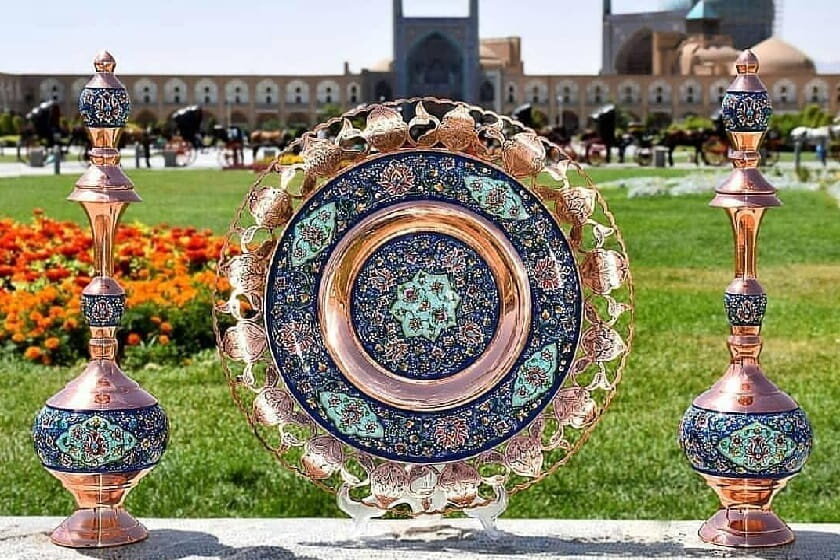TEHRAN — Iranian handicrafts continue to gain recognition in global markets, with exports to countries around the world, according to the Ministry of Cultural Heritage, Tourism, and Handicrafts.
In a statement reported by Mehr News Agency, the ministry highlighted the steady demand for Iranian handicrafts in international markets. “Ukraine, Thailand, Kenya, Syria, and Yemen were the leading importers of Iranian handicrafts in terms of weight during the first three months of the [current Persian] year (started on March 20).”
Ukraine topped the list, importing Iranian handicrafts worth approximately $42,000, followed by Thailand with $36,500, Kenya with $27,000, Syria with $19,500, and Yemen with around $14,000.
However, when considering the total value of exports, other countries showed even greater financial engagement. Russia, South Africa, the United Arab Emirates, Germany, Afghanistan, Iraq, Pakistan, Japan, Turkmenistan, and Turkey recorded the highest financial transactions related to Iranian handicrafts during the period.
According to Farzad Ojani, an official with the ministry, Iran’s handicraft industry has experienced a remarkable 53% increase in exports during the first quarter of the current Iranian year. The official highlighted that approximately 26 tons of handicrafts, valued at $74.5 million, were exported in the first three months of this year, compared to about 16 tons worth $48.6 million in the same period last year.
“The top provinces in terms of export value were Tehran, Khorasan Razavi, West Azarbaijan, Kermanshah, and Ilam,” the official mentioned, adding that Tehran led with nearly $30 million, followed by Khorasan Razavi with $7.3 million, West Azarbaijan with $7.2 million, Kermanshah with $6.5 million, and Ilam with $5.8 million.
Detailing the types of handicrafts exported, Ojani noted the significant contributions from metal crafts, wooden crafts, textiles, traditional embroideries, precious metals, ceramics, traditional glassware, and leather products.
He further elaborated on the performance of various handicraft sectors, mentioning a 79% increase in export value and an 86% increase in the weight of metal crafts. Wooden crafts saw a 74% rise in export volume and a 75% rise in value, the official continued.
“Textiles and traditional embroideries witnessed a 61% increase in weight and a 69% rise in value,” Ojani stated. “Moreover, the export of traditional embroideries and textiles grew by 49% in volume and 58%.”
He also noted a 31% increase in the export value of precious metals, with figures rising from approximately $13 million in the first quarter of last year to about $18 million this year.
In the ceramics sector, there was an 8% growth in volume and a 12% increase in export value, according to the official. Traditional glassware exports saw a significant 230% increase in weight, though with only a 4% rise in value, he added.
However, the leather goods sector faced challenges, experiencing a 45% decline in export volume and a 61% decrease in value, Ojani brought to light.
The official concluded by highlighting that other handicraft products saw a 168% increase in export volume and a 69% rise in value.


No comments:
Post a Comment